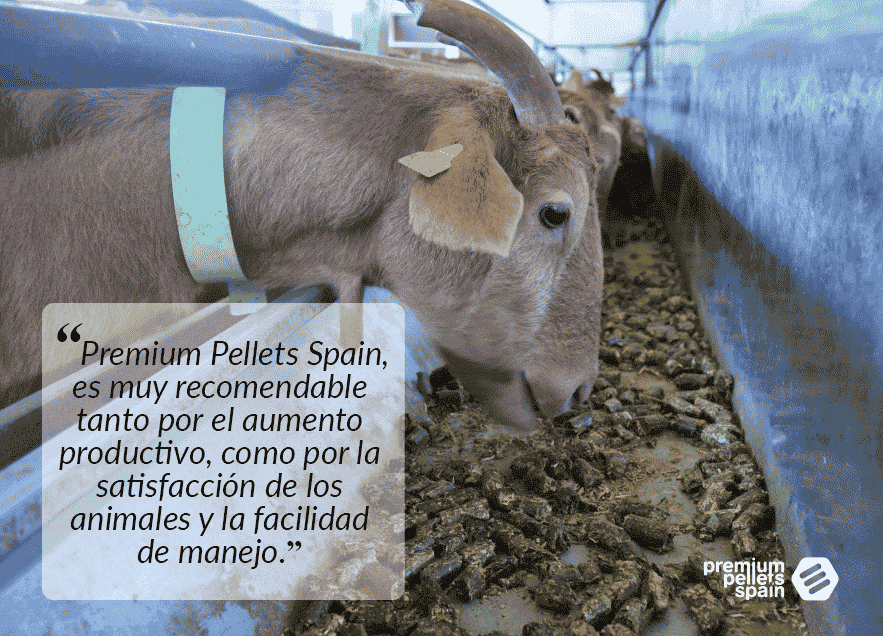A few months ago he started using alfalfa pellets to feed his goats, motivated by the novelty of the product and its easy handling. In this interview he tells us more in detail how he does it and the excellent results he is obtaining.
Jorge de la Torre tells us how he changed the feeding of his goat herd. This young farmer owns a goat farm with 339 goats, 10 of them males and the rest goats for breeding, for the production of milk and meat.
Jorge, left the city life with a good position as workshop manager of a large dealership to move to the village, nature and a profession full of sacrifice, deciding to devote himself to exploit his farm with a goat ranch in Torrejón del Rey, Guadalajara.
Interview

Why did you take the step to try alfalfa pellets? What caught your attention?
I was told about this new pellet, it is thicker than the normal pellet I knew and I decided to try it to see how clean the feeders were and to compare the work of feeding alfalfa in branches versus feeding this type of pellet.
The first time, I was struck by how appetizing the pellet looks, the color, it is thick and thick and when you break it you see alfalfa, you don’t see alfalfa powder. It is wonderful to have such a natural product.
What advantages and changes have you noticed in terms of goat health and production?
First of all, milk production has increased, which is a huge advantage for my farm. Secondly, I notice that the goats enjoy eating the pellet more and ingest it in less time. Finally, it is an advantage to be able to divide the alfalfa pellet into several feedings more easily than with alfalfa sticks.

How do you prepare the pellets for your cattle and how much do you feed them daily.
I have two lots of goats, a high production lot and another lot that is in the last months of lactation.
The high production flock ingests 1 kg of alfalfa pellets per animal per day and I give it to them in a morning and an afternoon feeding, half a kg in the morning and half a kg in the afternoon.
Goats in the last months of lactation eat half a kilo per day. They have been in lactation for 9 months, so alfalfa is reduced. They usually have 10 months of lactation, two months of rest and then calve..
After your experience with PPS, what recommendation would you give to another farmer who wants to feed pellets to his goats.
Very simple, the difference in physical labor between feeding alfalfa in branches and alfalfa pellets is considerable, the waste between feeding alfalfa in branches that falls out of the trough and what the goat does not eat because they always leave some in the trough, is also remarkable and the handling of the product when feeding the pellets is easier and tomorrow it can be handled with a hopper.
Would you recommend alfalfa pellets to other farmers?
Of course, it is highly recommended both for increased productivity, animal satisfaction and ease of management.





